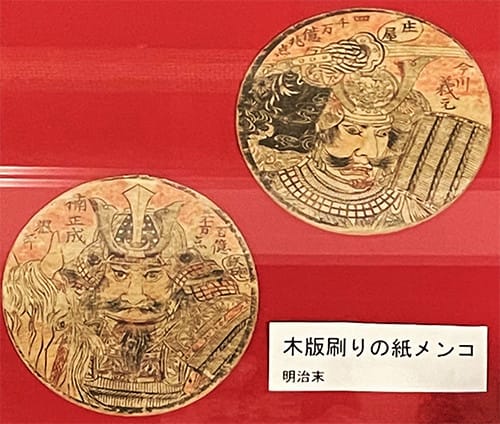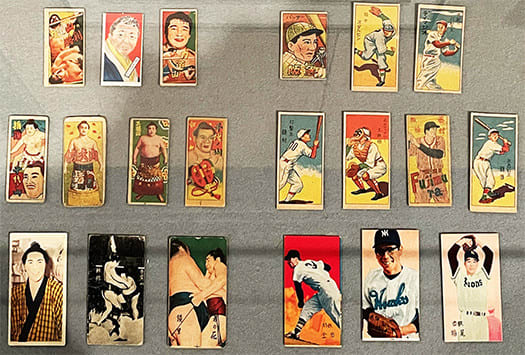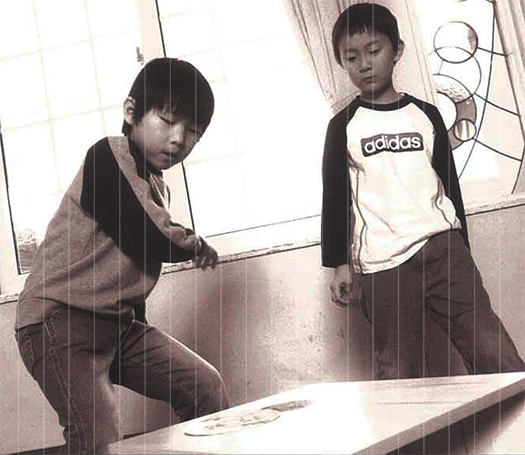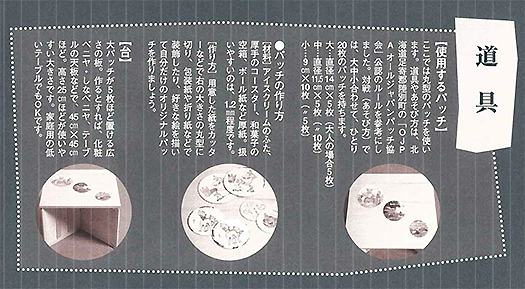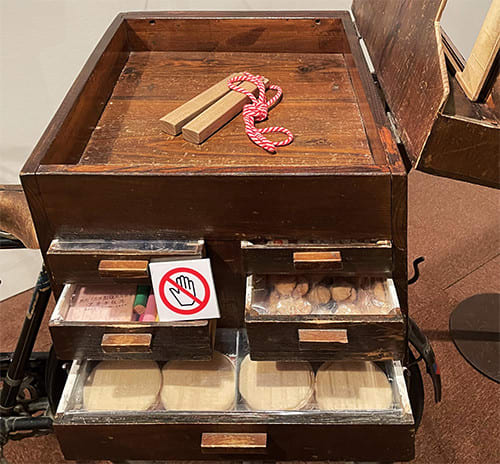


わたしが札幌で幼年期にはパッチと呼んでいた子ども遊びが、東京では、というか日本中央の文化圏では「メンコ」という呼称で呼ばれていたことが明らかになった。特定の平面を競技盤面としてメンコを並べて相互に相手のメンコを奪い合う仮想戦争ゲームということのようだ。
で、そのメンコの歴史について上野の「下町風俗資料館」展示では以下のように記載。〜メンコは江戸時代中期から遊び道具のひとつとして作られていた。はじめは型取りした粘土を焼いた「泥メンコ」で、明治初期頃まで使われていた(いちばん上の写真)。その後明治10年代に鉛の板に絵や模様を浮き出させて彩色された「鉛メンコ」が流行っていた(やや褪色しているが2番目の写真)。その後、木版刷りの技術を利用して、歴史上の武将の勇ましい姿や、軍人たちの絵を描いた「紙メンコ」が使われた。〜
う〜む、であります。自分自身の身体感覚が江戸時代の子どもたちとも具体的に繋がっている発見。一方、紙製で円い形状で、競技盤面に叩き付けてその「風圧」で相手のメンコをひっくり返したり、盤面から脱落させたりするゲームルールからはやや違和感のある素材が書かれている。泥メンコなど、どう考えても風圧でひっくり返せないだろうし、鉛メンコも重すぎる感じ。泥メンコなど後世のわたしたちがパッチと呼んだ使用法とはかけ離れ、どっちかといえば中にあんこが入った今川焼きではないか(笑)。
どうも子ども遊びとしてはそのルール、使用法が歴史的に変化してきたのかも知れない。時代考証のレベルの探究が必要とも思える。
しかし、江戸時代からの子ども遊びのツールが平成の世代のわが子まで連綿として繋がっているという発見はなんとも身体感覚で歴史が感じられて楽しい。変わらない物事への人の感じ方、その普遍性を感受するひとつのきっかけとして再認識させられる。・・・
English version⬇
The History of Children's Game "Menko" Postwar Children's Culture-4
The discovery that my own physical senses are concretely connected to those of children in the Edo period. The reality that I too will eventually become history (laughs). ...
It has become clear that the children's game I called patch in my childhood in Sapporo was called "menko" in Tokyo, or rather, in the cultural sphere of central Japan. It seems to be a virtual war game in which players line up their mencos on a specific flat surface to compete with each other for the other's mencos.
The history of menko is described in the exhibition at the "Shitamachi Folk Museum" in Ueno as follows 〜Menko has been made as a plaything since the middle of the Edo period (1603-1867). The first type of menko was "mud menko," which was made by baking clay molds, and was used until the early Meiji period (see the photo at the top). Later, "lead menco," in which pictures and patterns were embossed and colored on lead plates, became popular in the 1880s (the second photo, although slightly faded). Later, "paper menko," which utilized woodblock printing techniques to depict pictures of brave historical generals and soldiers, were used. 〜Hmmm.
Hmmm. A discovery that my own physical senses are also concretely connected to the children of the Edo period. On the other hand, the paper menko is made of paper and circular in shape, and the rules of the game, in which the menko is struck against the competition board and the "wind pressure" causes the opponent's menko to flip over or fall off the board, describe a material that is somewhat strange to me. Mud menco, for example, would not be able to be overturned by wind pressure, and lead menco seems too heavy. Mud menkos are far removed from what we in later generations would have called patches, and are more like Imagawa-yaki with red bean paste inside (laughs).
(Laughs.) Perhaps the rules and usage of this children's game have changed historically. It seems to me that we need to explore the level of chronological research.
However, the discovery that the tools of children's games from the Edo period are still connected to my own children of the Heisei generation is a fun way to feel history with a physical sensation. It is an opportunity to recognize again that there is a way of feeling that does not change in the human world, and to appreciate the universality of this way of feeling. ...











